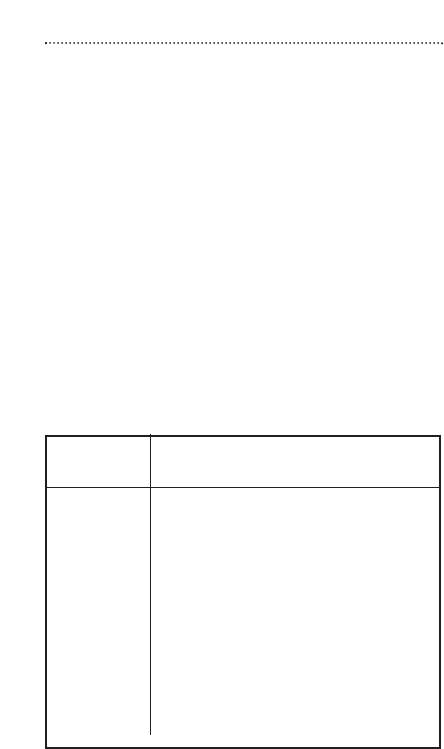
Be Aware of the Warning Signs of Carbon Monoxide:
Clues You Can See...
• Streaks of carbon or soot around the service door of your fuel-burning appli-
ances.
• Ayellow or orange flame may indicate a problem with natural gas appliances.
• Excessive rusting on flue pipes or appliance jackets.
• Loose or missing furnace panel.
• Moisture collecting on the windows and walls of furnace rooms.
• Loose or disconnected vent/chimney, fireplace or appliance.
• Small amounts of water leaking from the base of the chimney, vent or flue pipe.
• Rust on the portion of the vent pipe visible from outside your home.
• The absence of a draft in your chimney (indicating blockage).
• Fallen soot from the fireplace chimney.
• Loose, damaged or discolored bricks on your chimney.
Clues You Cannot See...
• Internal appliance damage or malfunctioning components
• Improper burner adjustment
• Hidden blockage or damage in chimneys
Carbon Monoxide
The maximum allowable concentration for continuous expo-
sure for healthy adults in any 8-hour period, according to
OSHA*.
Slight headache, fatigue, dizziness, nausea after 2-3 hours.
Frontal headaches within 1-2 hours, life threatening after 3
hours.
Dizziness, nausea and convulsions within 45 minutes.
Unconsciousness within 2 hours. Death within 2-3 hours.
Headache, dizziness and nausea within 20 minutes. Death
within 1 hour.
Headache, dizziness and nausea within 5-10 minutes. Death
within 25-30 minutes.
Headache, dizziness and nausea within 1-2 minutes. Death
within 10-15 minutes.
Death within 1-3 minutes.
50 ppm
200 ppm
400 ppm
800 ppm
1,600 ppm
3,200 ppm
6,400 ppm
12,800 ppm
Reminder: This chart relates to the exposure of healthy adults.
Concentration
of CO in the Air
(ppm = parts per million)
Approximate Inhalation Time and Symptoms Developed
Understand the Effects of Carbon Monoxide Exposure:
* Occupational Safety and Health Administration
21


















